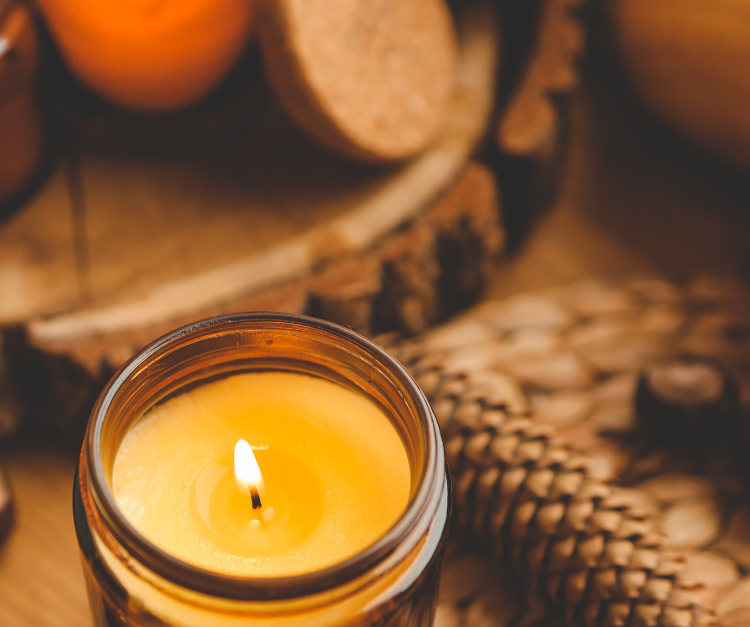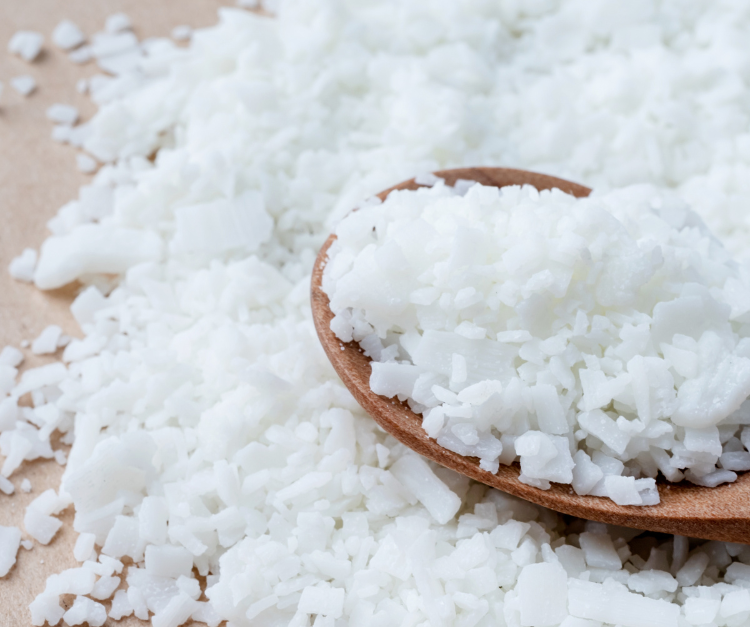
The most important part of a candle is the wick. It’s also the hardest part of candle making too. The wick determines how the candle burns, the size of the flame, burn time and performance of the candle. As a candle maker the longest part of the candle creation process is the wick. It’s the core of the candle and does all the work. It creates the melt pool that moves the wax up the wick to the flame to fuel the candle and keep it burning.
The type of wick that is used is based on the wax used, jar and jar size. The wick that is used can also impact the quality of your candle from how it burns, the flame height, scent throw and whether the candle burns evenly or not (like smoking, soot or tunneling). In this post, I want to talk about the different types of wicks used to make candles.
Types of Candle Wicks
#1 Cotton Wicks
Cotton wicks are the most common and widely used wicks in candle making. They are made from braided, twisted, or knitted cotton fibers and are known for their versatility and clean burn.
There are a few ways these wicks can be made
- Flat Wicks – Made from three strands of cotton braided together, these wicks provide a consistent, stable flame and are often used in container candles and pillars.
- Square Braided Wicks – Known for their robust and self-trimming nature, these wicks are commonly used in beeswax candles and larger pillars.
- Cored Wicks – These wicks have a core (usually made of paper, cotton, or zinc) that helps them stay upright and produce a stable flame. They are ideal for container candles and votives.
These are the types of wicks used in Sonnet Candles. What I like about these wicks is that they are clean burning, work well in a variety of waxes including coconut soy wax that is used to make our candles. These wicks are also self trimming. What that means is that they curl as they burn which reduces the need for excess trimming.
While I always say trim your wick before burning your candle to ensure you get the best burn out of your candle, I also know how most people use candles and I don’t have to look far as my own family may not always practice the candle care tips I preach. Which this type of wick curling and creating it’s own self trimming, it is beneficial to you the candle lover/owner.
#2 Wooden Wicks
Wooden wicks are made from thin strips of wood, often sourced from sustainable forests. They create a unique crackling sound when burned, adding to the candle’s ambiance. In recent years, the wooden wick has become a popular option to the cotton wicks. and the reason is because they create:
- Cool and Unique Aesthetic – The wood wick provides a cozy, rustic and natural feel to these candles and also has a nice crackling sound that feels like you’re cozied up by a fire.
- Clean Burn – like cotton wicks, wooden wicks also produce minimal soot residue or smoke.
- Steady and Consistent Flame – means that these wicks create a steady and even burn to a candle.
While these wicks have plenty of benefits, there are some drawbacks. These wicks can sometimes be tricky to light and are limited to the types of wax these wicks can be used in like soy and beeswax.
As a candlemaker one thing I love about making candles is how much you get to experiment. Candle making is truly a science and discovering new and interesting ways to create candles is something I’d like to do more of in the future. That includes working on a wooden wick line of candles. The only issue, finding time to work on this.
#3 Zinc Wicks
Zinc wicks are a type of cored wick. This means they have a central core that provides stability to the wick and that is made of zinc. The zinc wick stand upright in the melted wax pool, ensures a steady and consistent flame. The zinc core is surrounded by braided cotton fibers, which draw the melted wax up to the flame.
Zinc wicks are a bit controversial in the candle making world. There are some who love them for these benefits.
- Stability – The zinc core provides excellent rigidity, keeping the wick straight and centered as the candle burns. This stability is particularly beneficial for container candles, votives, and pillars, where a steady, upright wick is essential for even burning.
- Consistent Flame – Zinc wicks produce a consistent and controlled flame, which helps to prevent issues like tunneling (where the wax burns down the center, leaving unused wax around the edges) and excessive smoking. This consistent flame contributes to a clean and efficient burn.
- Easy to Work With – Zinc wicks are relatively easy to handle and insert into candles. Their rigid structure makes them simple to position and secure, reducing the chances of the wick bending or collapsing during the candle-making process.
- Works With a Variety of Waxes – Zinc wicks work well with a variety of waxes, including paraffin, soy, and palm wax. This versatility makes them a reliable choice for different candle-making projects.
While these wicks may be easy to use than cotton or wooden wicks it’s the drawbacks that create division in the candle world over it’s used.
- Metal Residue – there is a potential for trace amounts of metal residue to be released during burning. While this is typically minimal and not harmful, some candle makers and users prefer to avoid any potential exposure to metals.
- Not Eco Friendly – Zinc wicks are not as eco-friendly as some other wick types, such as cotton or hemp wicks.
- Not Compatible with Every Candle – While zinc wicks are versatile, they may not be suitable for all candle types. For example, they are not recommended for candles with very high fragrance loads or certain specialty candles where a different wick type may perform better.
While there are plenty of candles on the market made with zinc wicks, this is a wick that Sonnet will not use. I am focused on creating candles that are natural making Zinc wicks off my list of wick options.
There are some other wicks out there that can be used in candle making but are not widely used like the wicks above. Those are Hemp and Paper Core wicks. These wicks have a lot of benefits for the candles they’re used in. They also come with drawbacks too. Those draw backs make these wicks a little harder to work with and as a candle maker who has done her fair share of candle making, the last thing you want is a wick that is complicated to work with. It creates a lot of stress and anxiety but it also makes candle testing longer and harder.
Once the right wick is selected for a candle, the next part of the process is testing. Testing wicks takes time and patience. Based on the wax used there are wicks that work best and that’s the starting point. After that, the size of your candle jar and even the amount of fragrance used can play a part in how a candle burns. For me, creating a safe candle is the most important. Which means, I spend a lot of time testing and re-testing because the wax I use is natural, it can shift and change. Because of that testing is ongoing.
Hopefully, this overview on candle wicks gives you more insight on how your candles are made not just to make you a better candle consumer but to also see how much work goes into making a candle and why me and other candle makers put so much care into the candles we create. If you have questions about wicks, leave me a comment, I’m happy to answer any questions.


